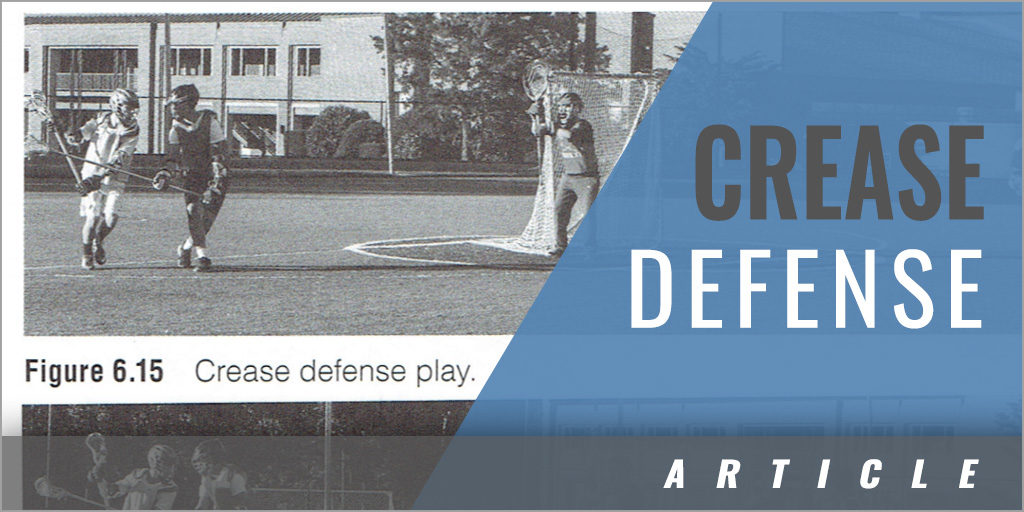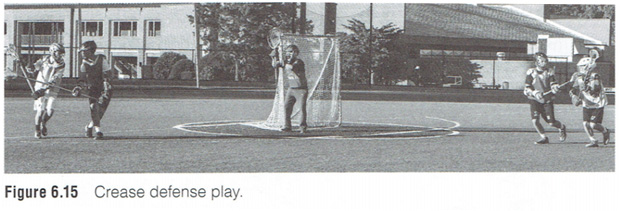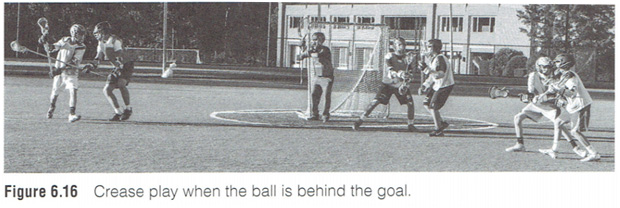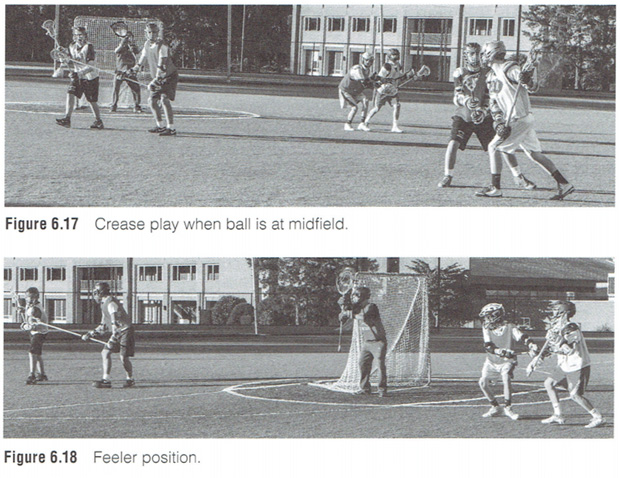|
By: Jack Kaley and Rich Donovan Originally Published in: Lacrosse Essentials Provided by: Human Kinetics Crease defense is essential to success; offensive players in the crease area have the highest percentage shot on the field due to close proximity to the cage. Any brief defensive lapse in this area can result in a goal being scored. Playing the creaseman has its own set of rules and techniques because you are playing the most dangerous scorer on the offensive half of the field. Because he is the closest man to the cage and in the middle of the offense at all times, he is a constant threat to shoot and score. Therefore, it is essential that the defensive player guarding him does not allow him to catch the ball. The defender must play between the creaseman and the ball whenever possible. The defender should have a feeler on the crease man at all times. By this we mean, if possible, he should have his stick on the offensive player's stick or body at all times. If he has to slide off of him to pick up a dodger, he must always keep his body and stick in the lane of the dodger and the creaseman. The most important rule for a defensive player who is playing the crease is to keep his stick in toward the creaseman and his body out toward the ball carrier (see figure 6.15).
This is sound defensive play regardless of the location of the offensive player with the ball. An offensive player who catches the ball in the crease (defined as the 4-by-4-yard area directly in front of the goal) normally takes a quick shot on the goal. Positioning your stick close enough to make a check if the ball is fed to the crease area normally prevents the offensive team from forcing the action. Placing your body between the ball and your man allows for a shorter slide to the dodger if he gains a step on his defender and is attacking the goal. CREASE PLAY WHEN THE BALL IS BEHIND THE GOAL The offensive crease attack player is most dangerous when the ball is behind the cage. He is in a position to see the ball at all times and may be aided by other players setting up picks for him. The defensive player must always be between the ball and the creaseman on the ball side to prevent being blocked out on an inside feed. The defensive player should use peripheral vision and maintain contact with the offensive player (see figure 6.16). If the offensive creaseman is active or working off of picks by teammates, the defender must forego his peripheral vision to see the ball and rely on the goalie's call for ball location. He must focus on the player he is defending more than on seeing the ball's location. He should be close enough and ready to react to check calls from the goalie and to clear the crease when a shot is taken. Clearing the crease means checking the offensive player's stick and physically moving him out of the immediate area of the crease. This is essential so that the goalie is free to gather up loose balls and to clear on breakouts.
PLAYING THE CREASEMAN WHEN THE BALL IS AT MIDFIELD When the ball is at the midfield, you must maintain top-side position to stay between the creaseman and the ball. Using your peripheral vision to locate your man and the ball is a little easier in this situation. It's important that you are aware of ball position at the midfield. You must be ready to back up on a dodge that comes directly toward you. When you slide to back up, keep your stick and body in the lane between the dodger and the creaseman, thereby making it difficult for the dodger to feed the crease. Keep your stick position so that you can feel your offensive player without looking directly at him (see figure 6.17). As previously mentioned, a feeler is when your stick is on the stick of the offensive player (see figure 6.18). You can't prevent him from moving his stick. However, if the pressure on the stick is light, the officials will allow your stick-on-stick contact. If you've been given a warning by the officials, then place your stick on a portion of his body and not his stick. When a shot is taken, drive out the crease attack player to keep him from screening the goalie. If a loose ball is in the crease area, the crease defenders must check the sticks and bodies of the offensive players to prevent a rebound. The defense has a 7v6 advantage, which should allow the goalie to gain possession if all the defensive players neutralize their assigned opponents.
|










